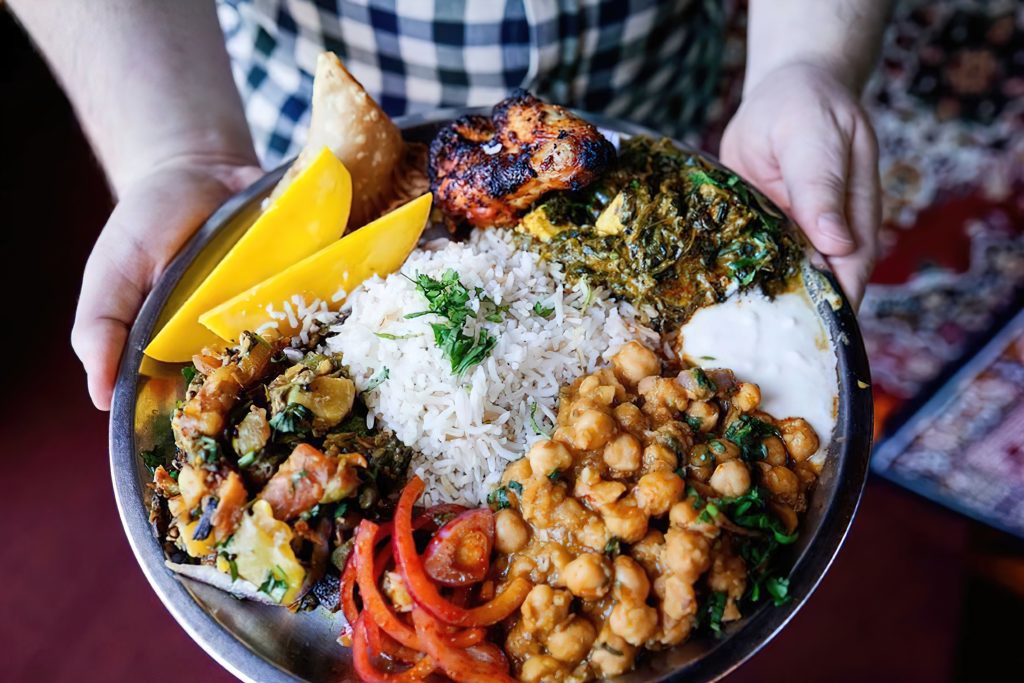Exploring the Isolated Flavors of the World
Have you ever wondered what meals are like in the world’s most secluded places? Today, let’s embark on a culinary journey to these hidden corners.
- The Gastronomic Wonders of the Faroe Islands
- Taste of the Outback: Australia’s Remote Bush Tucker
- Savoring the Solitude: Food in Greenland
- Delving into the Culinary Depths of the Amazon Rainforest
- A Journey to the Himalayas: Food at the Top of the World
- Unearthing Culinary Gems in Mongolia’s Steppes
- Island Flavors: The Food of Tristan da Cunha
- Survival and Sustainability: The Inuit Diet in Arctic Canada
- Conclusion: A Feast of Unique Flavors
The Gastronomic Wonders of the Faroe Islands
First, let’s head to the remote Faroe Islands. Here, traditional food preservation methods like drying and fermenting play an essential role. Dried mutton, or skerpikjøt, is a favorite. The islanders hang the meat in sheds called hjallur to air-dry for several months. The resulting flavor is unique and intense. Other Faroese specialties include ræst kjøt (semi-fermented meat) and ræst fiskur (fermented fish).
Taste of the Outback: Australia’s Remote Bush Tucker
Next, we journey to the Australian Outback, home to the Aboriginal peoples. The traditional diet, known as Bush Tucker, includes animals like kangaroo and emu and native plants like the Kakadu plum and wattleseed. These ingredients, harvested from the wild, offer a taste of the country’s ancient landscapes.
Savoring the Solitude: Food in Greenland
Greenland’s harsh environment has shaped a distinctive cuisine. With limited vegetation, the diet is mainly meat-based. Locals enjoy seafood like halibut and shrimp, and land animals like reindeer and muskox. Kiviak, a traditional Inuit food, is a unique dish made by fermenting little auks in a seal skin.
Delving into the Culinary Depths of the Amazon Rainforest
A Journey to the Himalayas: Food at the Top of the World
As we continue our culinary journey, let’s ascend to the heights of the Himalayas. In these remote mountain regions, food is simple yet nourishing. In Tibet, for example, tsampa, a roasted barley flour, is a staple. It’s often mixed with butter tea to create a hearty, calorie-dense paste. Another notable dish is momo, a type of dumpling filled with meat or vegetables, popular across the Himalayan regions.
Unearthing Culinary Gems in Mongolia’s Steppes
Our next stop is the vast steppes of Mongolia, where nomadic herders have developed a meat and dairy-based cuisine. Airag, a fermented horse milk, is a traditional beverage, while boodog, a goat or marmot cooked from the inside with hot stones, is a unique dish reserved for special occasions.
Island Flavors: The Food of Tristan da Cunha
We then travel to Tristan da Cunha, the most remote inhabited island in the world. Here, the small population relies on farming, fishing, and the resources the island offers. Islanders enjoy crayfish, or Tristan Rock Lobster, as well as potatoes and other vegetables they grow.
Survival and Sustainability: The Inuit Diet in Arctic Canada
Finally, we reach the freezing landscapes of Arctic Canada, home to the Inuit. The Inuit diet is rich in proteins and fats from marine mammals like seals and whales. They also gather berries and edible plants during the short summer season.
Conclusion: A Feast of Unique Flavors
The culinary traditions of the world’s most isolated places offer a unique perspective on how food is intertwined with geography, climate, and culture. From the hearty dishes of the Himalayas to the seafood-rich diet of Tristan da Cunha, each region’s cuisine reflects its unique environment and way of life. This gastronomic journey underscores the diversity of culinary practices around the world and the resilience of communities in some of the most challenging environments. It is a delicious testament to human adaptability and the universal joy of food.

